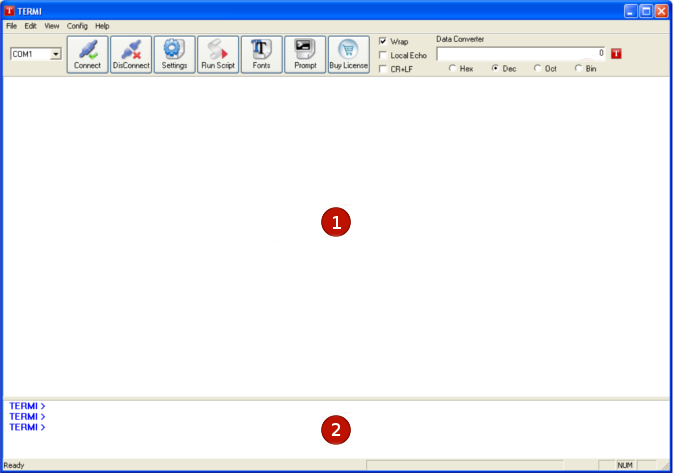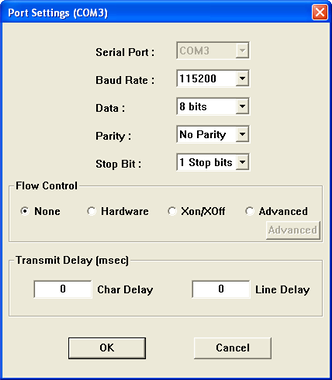Termi provides two interface pans, pan-1 directly talks to the connected serial-port and pan-2 supports powerful TCL scripting. Pan-2 can also talk to serial port using commands provided by TERMI. These TERMI commands can be used directly as TCL commands for scripting/automation.

1) Serial Pan
As shown above, pan-1 is a serial-port pan which gets connected directly to the serialport. Whatever user types on pan-1 goes directly to the serial port and subsequently all incoming data also gets displayed. This pan is also referred as serial pan in rest of the document.
2) TCL Pan
Pan-2 is scripting pan which supports TCL scripting. This pan can send data on serial port using commands like “SendOut” and “SendOutR”.

3) Serial-Port-list :
Drop-down
list of ports, TERMI supports COM1 to COM8 ports.
4) Connect :
Connect button is used to open port selected from serial-port-list. Only one port can be open at a time.
5) Dis-Connect :
Use to disconnect connected port.
6) Settings :
To set port specific settings. Port settings can be made to opened/connected port only.
Following settings are provided :-

7) Run Script :
To execute TCL script. Use this button to browse and run TCL script.
8) Fonts :
To change serial-pan font.
9) Prompt:
Hide/Show TERMI prompt. If user doesn't need TERMI prompt he may hide it to create more working space for serial-pan.
10) Buy License
Takes user directly to the TERMI license purchase page. User may also safely purchase license from www.innovativelogics.com. After successful license purchase, license file is sent to user via email. Valid license allows user to copy and save logs.
11) Format Settings :
a) Wrap : Enables line wrapping on serial-pan
b) Local Echo : Enables local echoing of transmitted character on serial-pan
c) New Line : By default CR is new-line character but can be set to CR+LF
12) Data Converter :
Allows user to convert values between decimal, octa-decimal, hexadecimal and binary. Very useful feature for embedded developers.
